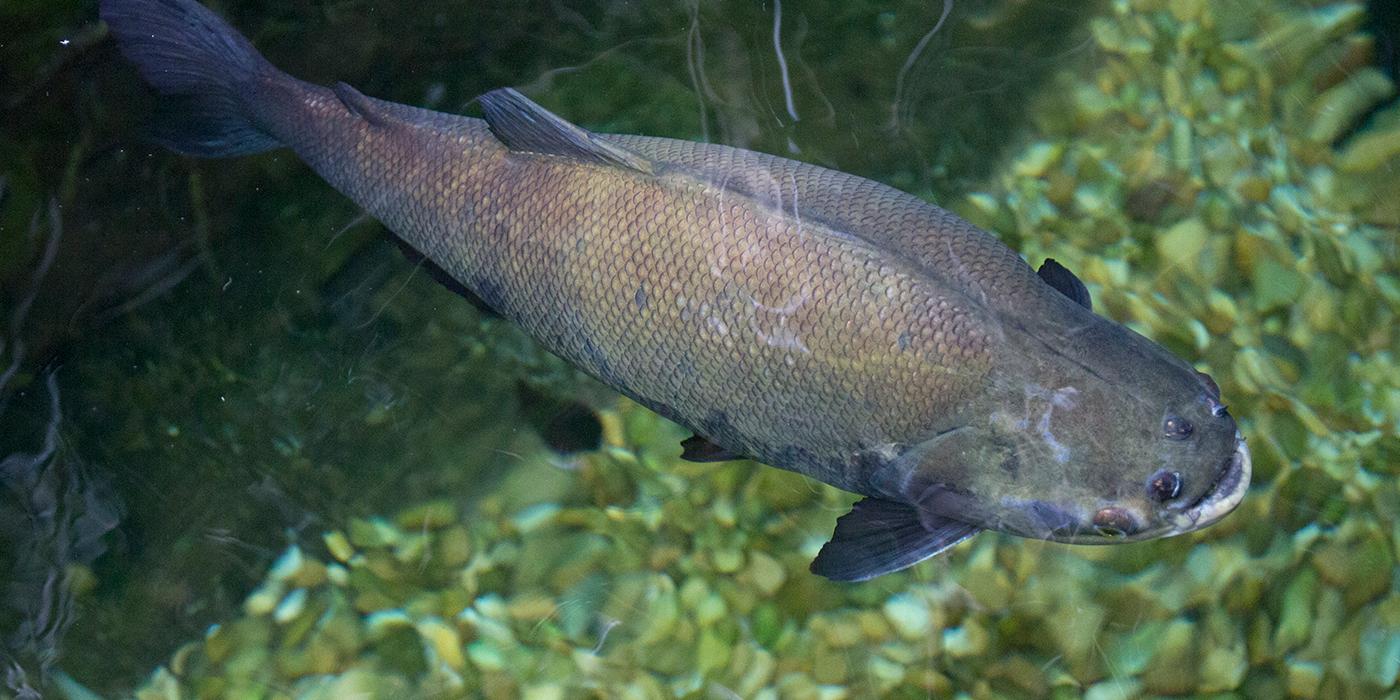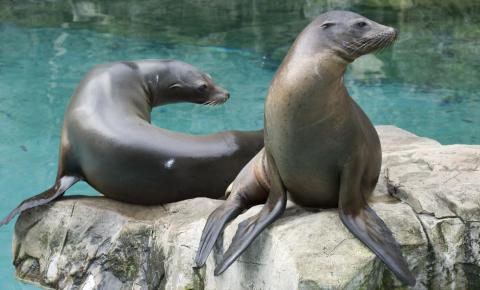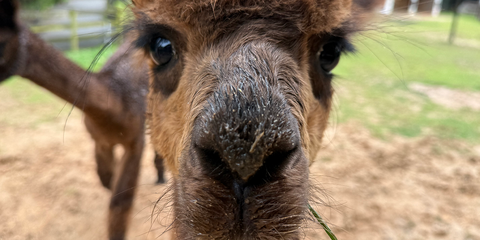Physical Description
Black pacu are tall, narrow fish shaped like a disk or plate. This body shape makes them well-adapted for movement between aquatic plants. They have small eyes and an arched back. The body is dark below and lighter above. This is unusual in aquatic animals which usually exhibit the opposite as it helps with camouflage. Pacu have an adipose fin (a small, fleshy dorsal fin) located behind the dorsal fin. Despite its large size, black pacu are a peaceful, non-aggressive species.
Size
Pacu can reach 3 feet in length and weigh over 65 pounds.
Native Habitat
Red hook pacu live in the upper Amazon River basin in South America.
Lifespan
Pacu live about 15 years.
Food/Eating Habits
Pacu eat fruit. They are generalist feeders but seem to always include plants in their diet. At the Smithsonian's National Zoo, they are fed grapes, banana, papaya, sweet potato, omnivore gel diet, herbivore gel diet, earthworms, shrimp, smelt, squid and herring. They prefer to eat fruits, decaying plant matter, snails and grains as they would in the wild. However, at the Zoo they seem to accept a more varied diet.
Reproduction and Development
Black pacu are spawning fish, with the young living within floating vegetation in the black waters of the Amazon River basin.
Conservation Efforts
Pacu are caught for food in South America and are bred in fish farms for food and the pet trade. Many species of pacu are imported for the aquarium trade as piranha.
This confusion often leads to release in nonnative waters as they quickly outgrow their aquariums. Pacu have been introduced to United States in rivers from Washington to Florida.
Help this Species
- Choose your pets wisely, and do your research before bringing an animal home. Exotic animals don’t always make great pets. Many require special care and live for a long time. Tropical reptiles and small mammals are often traded internationally and may be victims of the illegal pet trade. Never release animals that have been kept as pets into the wild.




